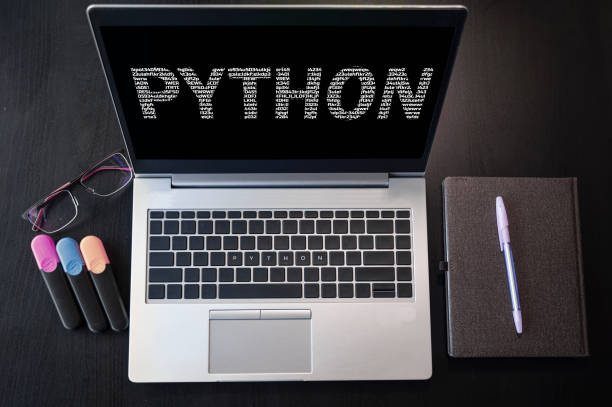Foundations of Python: A Comprehensive Guide to Getting Started
Python has become one of the most popular programming languages due to its simplicity, readability, and versatility. Whether you’re a beginner or looking to refresh your knowledge, understanding the foundations of Python is crucial. This guide will walk you through the essential concepts and features of Python, providing a solid foundation for further learning.
1. Introduction to Python
Python is an interpreted, high-level programming language known for its clear syntax and readability. It supports multiple programming paradigms, including procedural, object-oriented, and functional programming. Python is used in a variety of fields, including web development, data science, automation, and more.
2. Setting Up Your Python Environment
To start coding in Python, you need to set up your development environment:
- Install Python: Download and install Python from the official website. The installation includes IDLE, Python’s integrated development environment.
- Choose an IDE or Text Editor: Popular options include PyCharm, VS Code, Sublime Text, and Jupyter Notebook.
- Verify Installation: Open a terminal or command prompt and type
python --versionto check if Python is installed correctly.
3. Python Basics
Hello World Program:
print("Hello, World!")
Variables and Data Types: Python is dynamically typed, meaning you don’t need to declare variable types explicitly.
# Variables
name = "Alice" # String
age = 30 # Integer
height = 5.5 # Float
is_student = True # Boolean
Basic Operations: Python supports various operators for arithmetic, comparison, and logical operations.
# Arithmetic Operations
sum = 10 + 5 # Addition
difference = 10 - 5 # Subtraction
product = 10 * 5 # Multiplication
quotient = 10 / 5 # Division
remainder = 10 % 3 # Modulus
# Comparison Operations
is_equal = (10 == 5) # Equality
is_greater = (10 > 5) # Greater than
# Logical Operations
result = (10 > 5) and (5 < 3) # Logical AND
4. Control Structures
Conditional Statements: Control the flow of execution based on conditions.
age = 18
if age >= 18:
print("You are an adult.")
else:
print("You are a minor.")
Loops:
Python provides for and while loops for iteration.
# For Loop
for i in range(5):
print(i)
# While Loop
count = 0
while count < 5:
print(count)
count += 1
5. Functions
Functions help organize code into reusable blocks.
Defining a Function:
def greet(name):
return f"Hello, {name}!"
Calling a Function:
message = greet("Alice")
print(message)
6. Data Structures
Lists: Ordered, mutable collections of items.
fruits = ["apple", "banana", "cherry"]
print(fruits[1]) # Accessing elements
fruits.append("date") # Adding elements
Tuples: Ordered, immutable collections of items.
coordinates = (10.0, 20.0)
print(coordinates[0])
Dictionaries: Unordered collections of key-value pairs.
student = {"name": "Alice", "age": 21}
print(student["name"]) # Accessing values
student["age"] = 22 # Updating values
Sets: Unordered collections of unique items.
unique_numbers = {1, 2, 3, 4}
unique_numbers.add(5) # Adding elements
7. File Handling
Python allows reading from and writing to files.
Reading a File:
with open("example.txt", "r") as file:
content = file.read()
print(content)
Writing to a File:
with open("example.txt", "w") as file:
file.write("Hello, file!")
8. Exception Handling
Exception handling is used to manage errors gracefully.
try:
result = 10 / 0
except ZeroDivisionError:
print("Cannot divide by zero!")
finally:
print("This will always execute.")
9. Modules and Packages
Modules and packages help organize code into manageable sections.
Importing a Module:
import math
print(math.sqrt(16))
Creating a Module:
Save the following code in a file named mymodule.py:
def greet(name):
return f"Hello, {name}!"
Using the Module:
import mymodule
print(mymodule.greet("Alice"))
10. Object-Oriented Programming (OOP)
OOP is a paradigm that uses objects and classes to structure code.
Defining a Class:
class Dog:
def __init__(self, name, age):
self.name = name
self.age = age
def bark(self):
return f"{self.name} barks!"
# Creating an Object
my_dog = Dog("Rex", 5)
print(my_dog.bark())
11. Working with Libraries
Python has a rich ecosystem of libraries for various tasks. Some popular libraries include:
- NumPy: For numerical computing.
- Pandas: For data manipulation and analysis.
- Requests: For making HTTP requests.
Installing a Library:
bashpip install numpy
Using a Library:
import numpy as np
array = np.array([1, 2, 3, 4])
print(array.mean())
Conclusion
Python’s simplicity and readability make it an excellent choice for beginners and experienced developers alike. By understanding the foundations of Python, you can build a solid base for exploring more advanced topics and projects. Keep practicing, experimenting with different features, and leveraging Python’s extensive libraries to enhance your programming skills.
Whether you’re interested in web development, data science, automation, or another field, Python provides the tools and flexibility to bring your ideas to life. Happy coding!





0 Comments